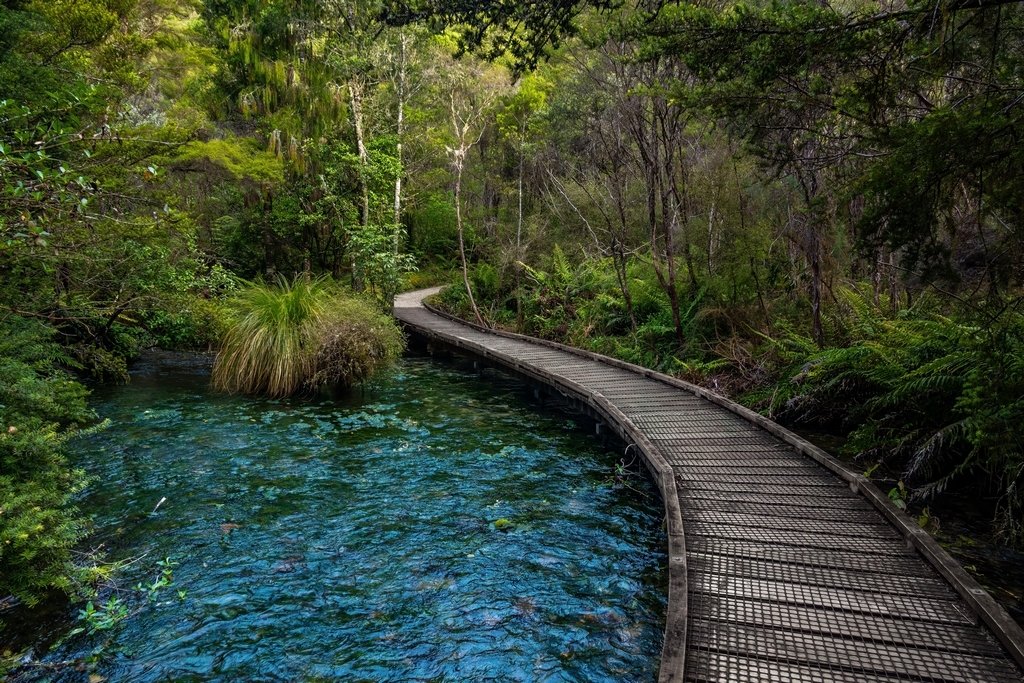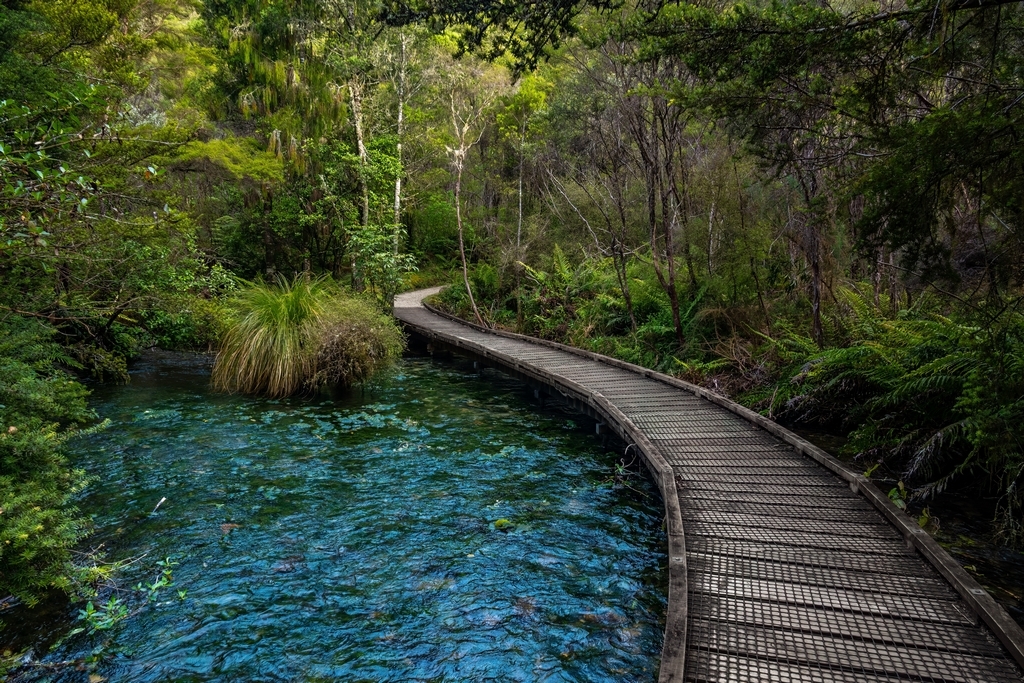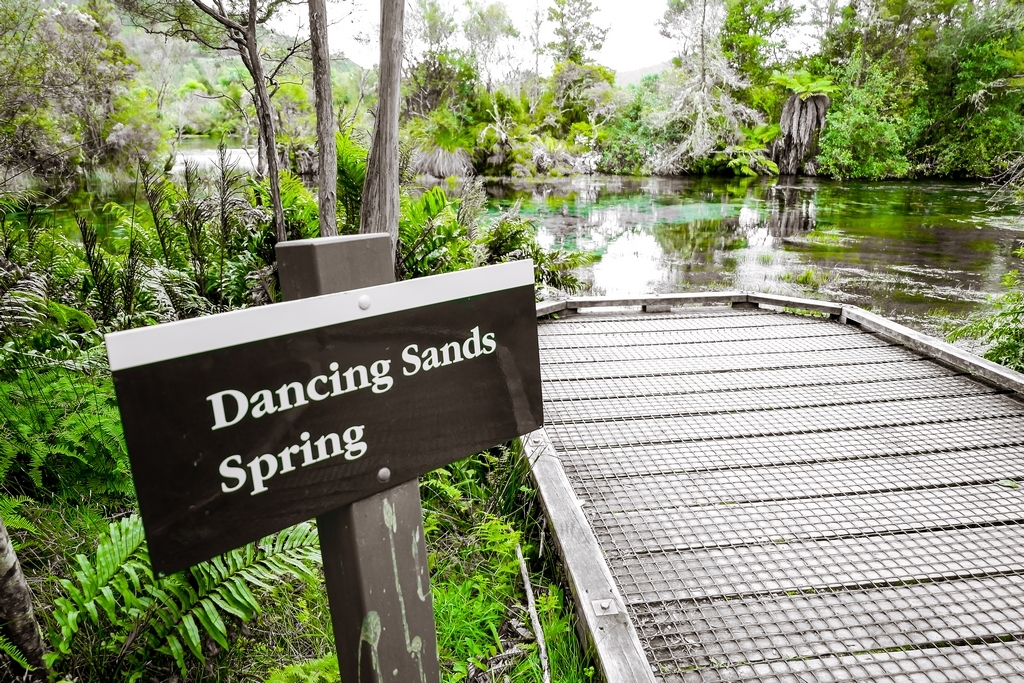Finding a Southern Treasure


Protecting its most beautiful waters and landscapes is a cultural priority seen as a civic responsibility in New Zealand. One example can be found in a shimmering body of water known as Te Waikoporopupu Springs, which stands among the island nation’s dreamlike places that are being treasured and preserved for future generations – and a great reason to visit.
By Meena Dandridge
Even in New Zealand, a land renowned for its breathtaking landscapes and natural wonders, Te Waikoropupu Springs stirs the spirit and reinforces the importance of preserving natural places. It’s one of the most beautiful places on the planet.
Located in the Tasman Region on NZ’s South Island, the springs are celebrated for the water’s stunning clarity, cultural significance, and its vital role in environmental conservation.
The place is not just a geological wonder, but also holds immense cultural importance for the local Maori people. “Waikoropupu” is a Maori word meaning “to push out leaves underwater,” which perfectly describes the crystal-clear water that emerges from underground vents. Its springs are considered sacred, with rich spiritual connections to the Maori ancestors.
The site is situated within the Kahurangi National Park, where they have been protected and revered by the Maori and New Zealand government alike.
Ecological Marvel
Beyond their cultural significance, Te Waikoropupu Springs are a testament to the extraordinary power and beauty of New Zealand’s natural waters. Renowned for incredible clarity, visibility in the water can exceed 60 meters (200 feet). This remarkable lack of turbidity is due to the unique geology of the area. The water originates from underground springs and then flows through an intricate network of caves and limestone filters before emerging on the surface, which results in water of exceptional purity.
The springs are also notable for the volume of water discharged from its eight main vents. An estimated 14,000 liters of water are produced per second, approximately enough to fill 40 bathtubs. In a 1974 television documentary, it was noted that this would be enough water to supply a city the size of Boston — making it the largest natural springs in the Southern Hemisphere.
The floor of the lake created by the springs is covered with white sand, where waters flowing from some of the smaller vents carry the sand upward, which have become known as the “dancing sands.” Because swimming and scuba diving are heavily restricted, only a few divers have seen the vents and sands up close.
The springs also supports a diverse ecosystem of native aquatic plants and species. The clarity of the water enables sunlight to penetrate deep below the surface, driving the growth of a unique and delicate flora and fauna. Species like the longfin eel and several species of galaxiids, a type of small fish native to New Zealand, thrive in the pristine waters.
Conservation and Protection
Access to the springs is strictly controlled to minimize human impact. Visitors are encouraged to follow guidelines, such as refraining from touching the water, to maintain its purity. The stewardship of this area is shared between local Maori iwi (tribes) and the Department of Conservation, ensuring a collaborative effort to preserve the springs.
The importance of these efforts goes beyond preserving the beauty and cultural significance of Te Waikoropupu Springs. As the world faces increasing environmental challenges, these crystal-clear waters represent a stark reminder of the need to protect and conserve natural resources.
At the entrance to the walkway to the springs, the Department of Conservation has placed a sign:
“Te Waikoropupu Springs are a taonga (treasure) and waahi tapu (a sacred place) for Māori, both locally and nationally. The legends of Te Waikoropupu are told in the stories of Huriawa, its taniwha (guardian spirit). In Māori tradition the springs are waiora, the purest form of water which is the wairua (spiritual) and the physical source of life. The springs provide water for healing, and in the past were a place of ceremonial blessings at times of birth and death and the leaving and returning of travelers.”
Te Waikoropupu Springs stand as a shimmering example of the beauty and importance of our natural world, a beacon of hope for a sustainable and harmonious relationship between humanity and nature – and it’s a great place to visit.
Meena Dandridge is a self-described luxury nature connoisseur based in Soquel, Calif. She is a competitive orienteer, yoga instructor, ocean enthusiast and manicure artist. She is known to say, “In the presence of water, we’re never alone.”
Photos by Sebi Wolf | Shutterstock











